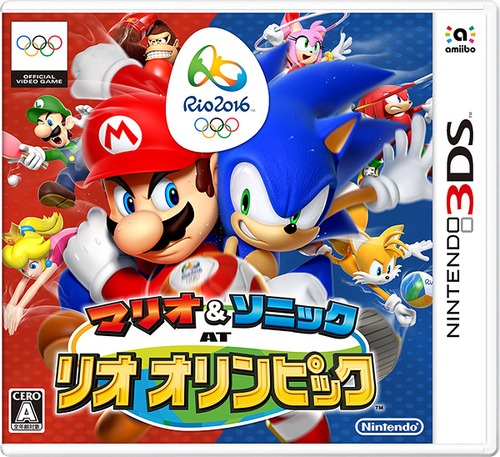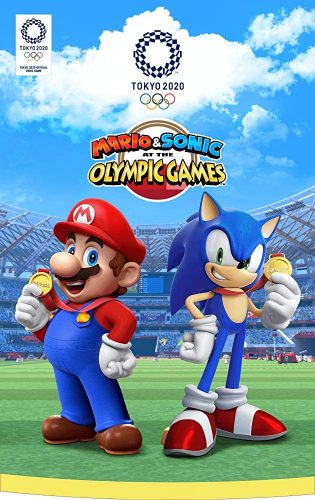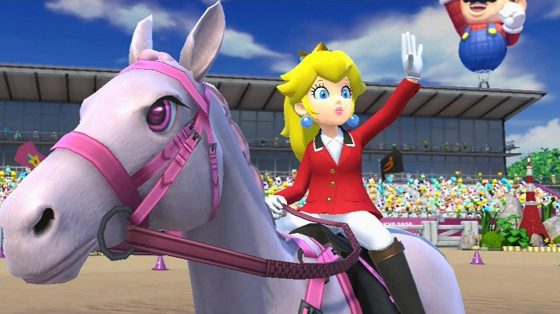
With the year 2020 upon us, we’re due for another Summer Olympic event, giving us all something to look forward to. That’s right: A new Mario & Sonic at the Olympic Games uh… game.
Though once seen as bitter rivals, these two characters are now seen almost as sibling brands. A paradigm shift largely influenced by this bizarre yet fitting crossover series that has pitted gaming’s two biggest platforming mascots head to head in athletic competition since 2007. With Mario & Sonic at the Tokyo 2020 Olympic Games already upon us, let’s look back at all the games that preceded it.
Mario & Sonic at the Olympic Games
Ever since Nintendo’s competitor transitioned into a third-party game company in response to the failure of their Dreamcast system, a crossover game between their blue blur and Nintendo’s portly plumber had been a hot topic of discussion. After years of back-and-forth, Mario & Sonic at the Olympic Games released for the Wii in 2007 to near-universal commercial and critical success. This was thanks not only to its incredible star power but also to its elegant simplicity. The game stands out in the ocean of Wii motion-control minigame collections thanks to the minimal controller movements required for each game, representing 24 varied Olympic events in bite-sized formats that keep the action precise.
Speaking of which, Mario & Sonic at the Olympic Games features a healthy 32-person/hedgehog roster with unique stats. The differences are always tangible, but having the right stats still won’t let you beat significantly better players. The game may not have had that much depth, but with so much of its design tailored for simple fun, it didn’t need to be. Which leads us to…
Mario & Sonic at the Olympic Winter Games

Here’s a sequel whose entire M.O. is to take everything from the first 11 games. While Winter Games could have just copied and pasted its predecessor’s formula onto a few dozen winter sports, it instead expanded Mario & Sonic’s design with an experience that felt bigger in every way. Customization was no longer limited to character selection, but now included unlockable skins for your equipment, minigames were generally much longer and more complex with some even bringing co-op play to the series for the first time and the new festival mode which took players through the entire Olympic experience from opening to closing ceremonies gave a reason to play alone for a change.
The trippy dream events were probably given the biggest expansion, though. They were a footnote at best the last game, mostly just a few events already in the game lightly retooled to feel more like a Mario or Sonic game. That wasn’t going to cut it for Winter Games though, which practically recreated some of the characters’ finest moments through their various sports. Snowboarding turned into Mario Kart-esque races through radical highway, figure skating turned into an icy platforming adventure to save the Mushroom Kingdom and Ski Jumping turned into an interplanetary trip through Good Egg Galaxy. The sheer amount of stuff to do in the game towered over its predecessor, but would soon have to face succession.
Mario & Sonic at the London 2012 Olympic Games
Just kidding, Mario & Sonic’s English adventure completely failed to reach Winter Games’ heights.
Okay, maybe that’s a bit unfair, but Nintendo and Sega’s third Olympic expedition didn’t make much of an effort to build upon the series’ foundation like the second did and in some cases ignored its many innovations. The cast was shrunk down to 20 characters, Festival mode was scrapped and only a few new sports were added.
It still had its bright spots; The new London Party mode spiced up the gameplay with a Mario Party-style board game and the dream events continued to impress as they had before. But the former didn't really justify the loss of festival mode and the latter only featured 10 minigames, the same number as the previous entry. There was still fun to be had, but it came with a sense that the series was spinning its wheels.
Mario & Sonic at the Sochi 2014 Olympic Winter Games
Mario & Sonic's 2014 incarnation also spun its wheels… in reverse, undoing even more of the polish brought by the original Winter Games. It marked the series' jump from Wii to Wii U with a graphical upgrade and 2 new minigames (figure skating pairs and slopestyle snowboard, so not all that new after all) in exchange for a reduced Dream Event lineup of 8 and the sacking of party mode.
There were a few new points of interest, the online mode—the series’ first—was fun, the Wii U Gamepad was integrated in some creative ways and the new mixed event where players competed in multiple sports simultaneously breathed some new life into these old events, but not enough to stop 2014 from feeling like a downgrade.
Mario & Sonic at the Rio 2016 Olympic Games
The Rio Olympics were somewhat controversial, but not because of their Mario & Sonic tie-in which broke the series out of its slump. Players could choose from a whopping 36 characters and although there were technically only 2 new sports (rugby and golf), plenty of returning events such as swimming and athletics were retooled and refined, finally setting the game apart from what came before. Some games didn't even use motion controls, giving the game even more of the varied identity the last few had lacked.
A lack of single-player content and a series low for Dream Events of only 3 held the game back a lot, but with the core experience finally rejuvenated, the Mario & Sonic series had its second wind.
Mario & Sonic at the Olympic Games: Tokyo 2020
And thankfully, the newest game in the series only kept that momentum going. Granted, it’s not a lot of momentum since they skipped the PyeongChang Games of 2018 and many still feel burnt out on the mediocre entries. But the Tokyo take on the Olympic formula is by all accounts a polished title that revives the multiplayer fun of the Wii minigame collections of yesteryear. There are a few drawbacks, like the downgraded roster of 32 characters and 3 dream events or the downgraded netcode, but the advantages more than make up for it.
Most noticeably, karate, skateboarding, sport climbing, and surfing have been added as new sports along with a fully-fledged story campaign for a little single-player healthcare, which was the feature we were the happiest to see going into the game for the first time. But the real treat was a less-publicized mode simply titled Tokyo 1964. These are absolutely adorable 2D events that repurpose the characters’ 8 and 16-bit sprites for games that feel and play much more like something from the NES or Sega Genesis. We’re glad that the story of Mario & Sonic at the Olympic Games will have a happy ending for the time being.
Final Thoughts

Have you played any of the many Mario and Sonic Olympic outings? Will you be buying the latest entry? Do you even care about the Olympics at all? Let us know in the comments and enjoy the 2020 games.


